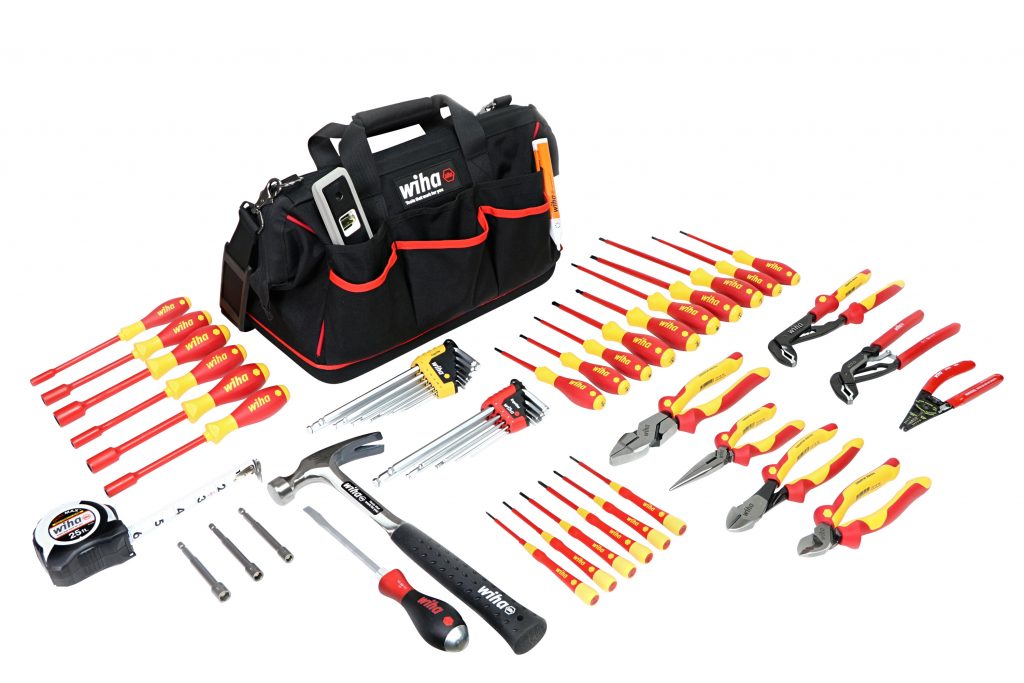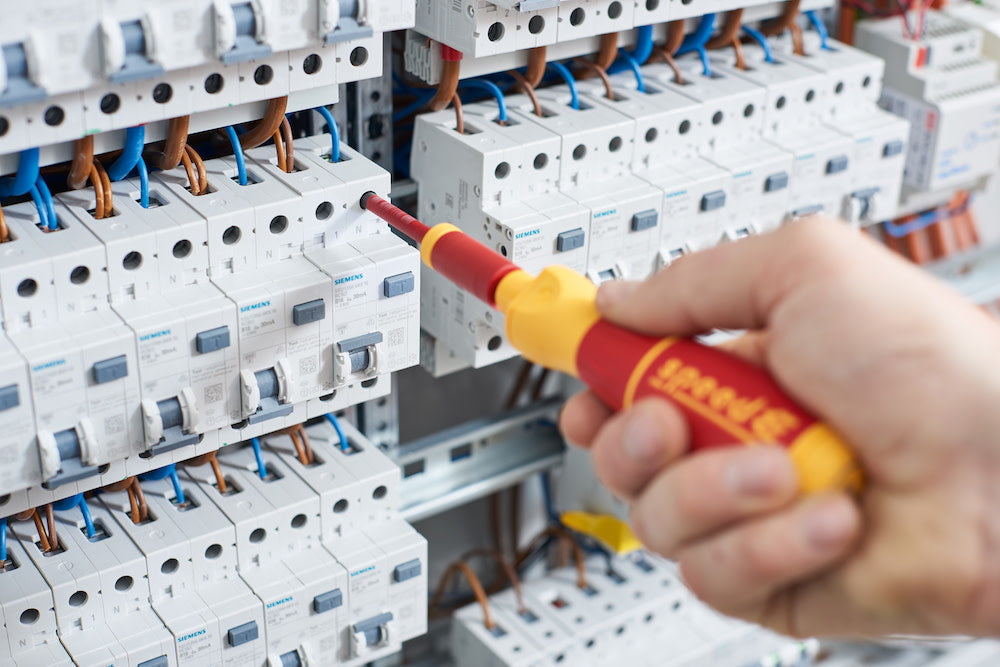VDE stands for Verband der Elektrotechnik, who is responsible for testing and certifying tools and appliances. The VDE Testing and Certification Institute is a nationally and internationally accredited institution in the field of testing and certification of electrical engineering devices, components, and systems. They test electrical products for safety, electromagnetic compatibility, and other product properties including Wiha's VDE Certified Tools.
The Ultimate Tests
It's not easy becoming an Insulated tool at Wiha. We put every VDE marked insulated tool through rigorous testing. All of our Insulated VDE rated tools go through the following testing:
VDE Voltage Piece Test
To perform the Voltage Piece Test, our tools are submerged in water for 24 hours. After this period they are then electrified with 10,000V AC for three minutes. Neither a spark over nor a disruptive discharge through the insulation may occur. If and when no current is detected, they are approved for up to 1,000 V AC (and 1,500 V DC) thus earning the VDE Certification.
VDE Cold Shock Test
The tools are first cooled down to -25 °C ( -13°F), then during this process, the insulating material must retain its toughness so that it does not break when subjected to impacts and jolts.
VDE Adhesion Test
The adhesion of the insulating material coating is tested by applying a tensile force of 500 N following storage for 168 hours, (7 days) at 70 °C (158 ° F). The insulating material must continue to be firmly connected to the basic tool to pass when doing so.
VDE Pressure Test
No disruptive discharge may occur at a pressure load of 20 N, a temperature of 70 °C, and a test voltage of 5,000 V AC.
VDE Combustion Test
When exposed to a flame for 10 seconds, the insulating material must not continue to burn, but instead extinguish.
The VDE-GS Certified Mark Technical
Wiha Insulated VDE Certified Tools are adorned with the stamp shown above. This stands for the safety of the product with regard to electrical, mechanical, thermal, toxicological, radiological and other dangers. Tools marked with the VDE-GS conform to the VDE regulations or European or internationally harmonized standards. They confirm the compliance with the safety requirements of the respective guidelines.
Double Triangle and Voltage Range
The double triangle signifies that the tool has an assigned voltage or voltage range specification or the class. It essentially shows that they are suitable for working on energized parts.
IEC 60900:2004
This represents an international standard in which, among other things, describes the design of insulated tools in detail. For example, the thickness of the protective insulation is specified. The standard also defines individual tests (piece tests) as well as series and random sample tests for checking the electrical safety of the protective insulation.
Why Should I Use Wiha VDE Certified Tools?
All VDE Certified Tools are rigorously tested to ensure the quality, construction, safety and even the ergonomics meet with the protective requirements of the applicable European Union Directive. Using these tools adds peace of mind and safety to your work.

Although we go the extra mile to ensure safety when working in environments where electrical current may be present, we still encourage the highest of safety practices.
- Always cut power to the locations that you are working in
- Use a voltage detector to confirm that there is no live power
- Use VDE Certified Tools in potentially live working environments
Where can I buy insulated tools that have the VDE mark in the USA and Canada?

 points
points























































